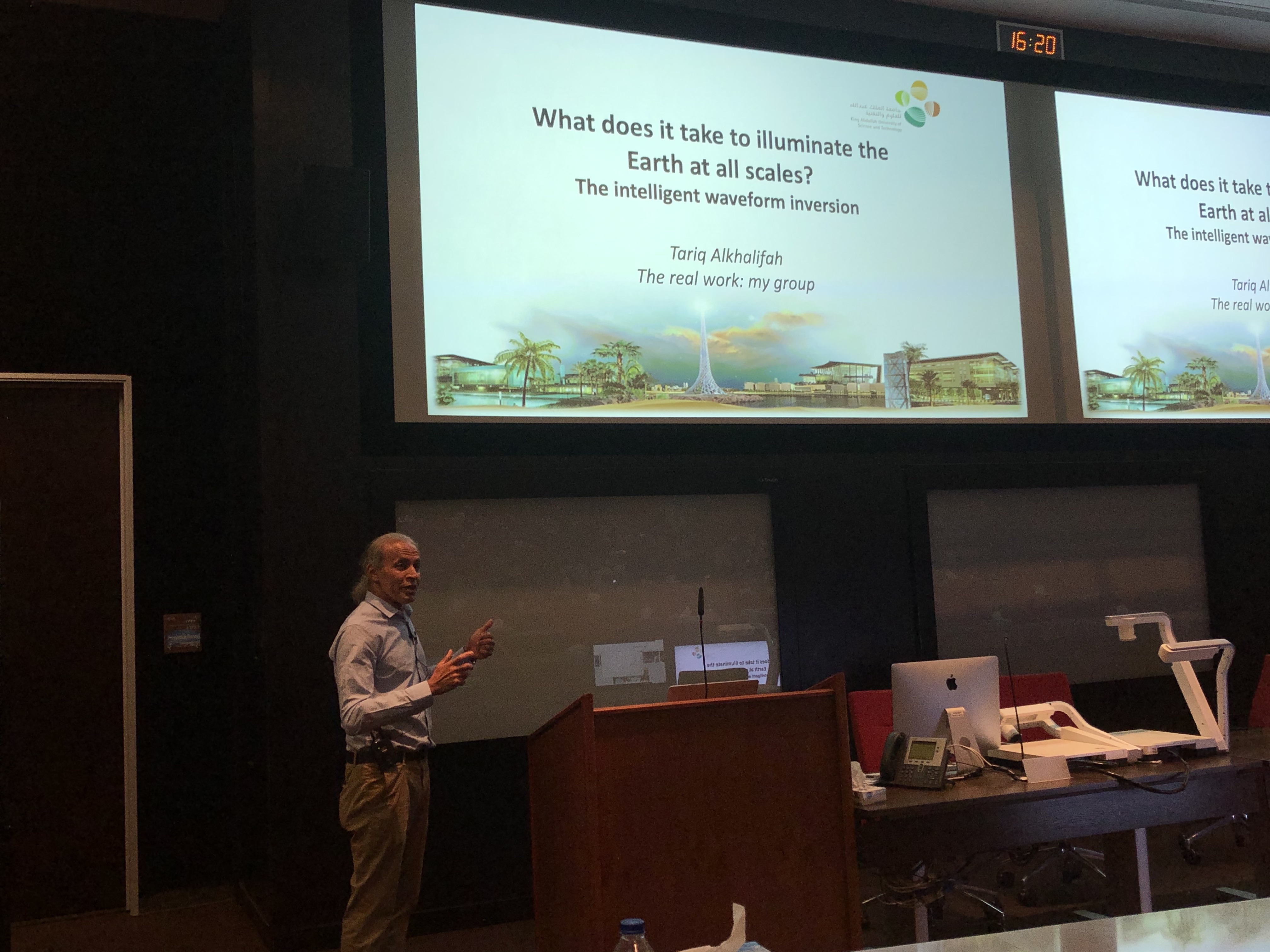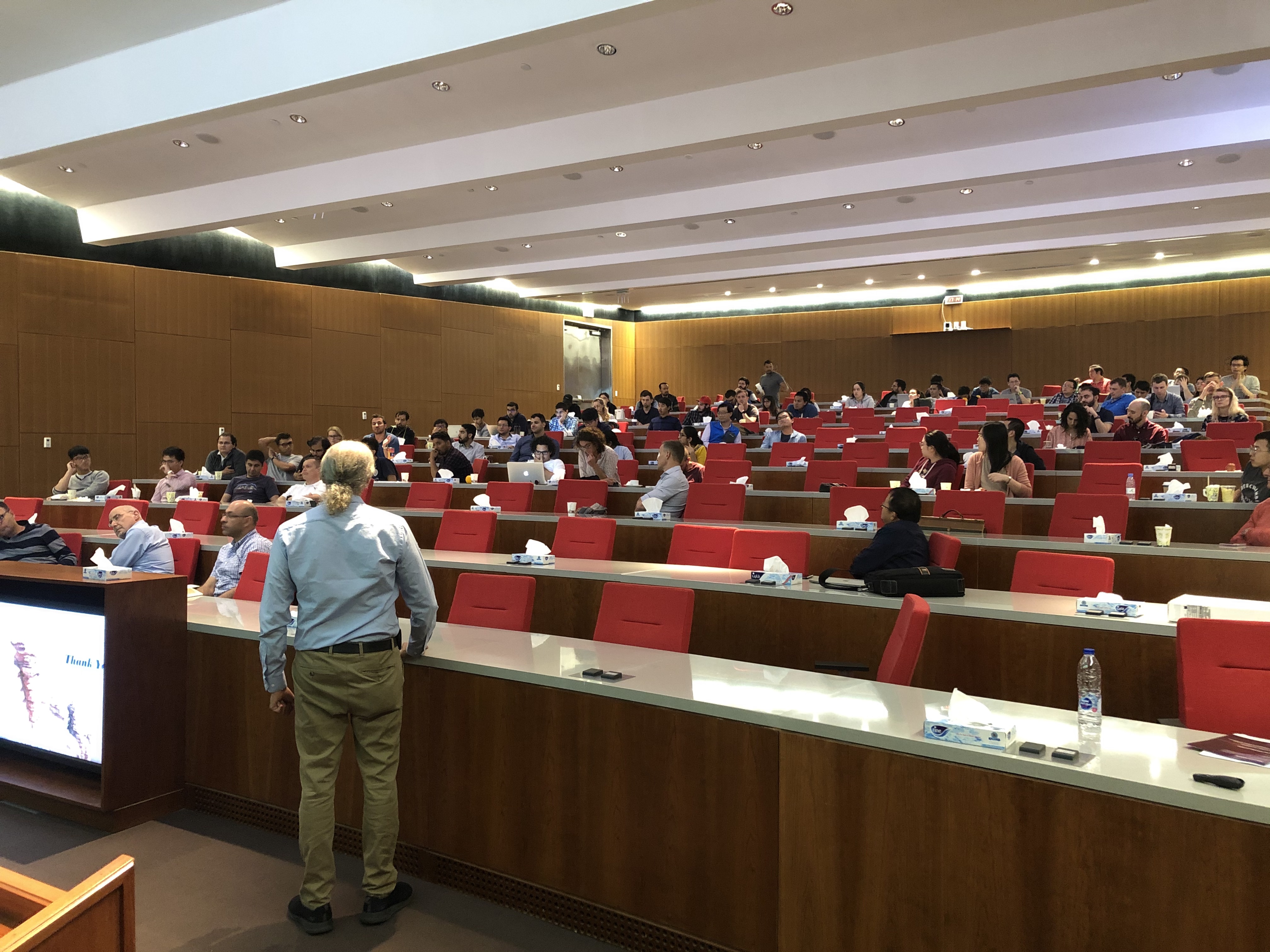Prof. Alkhalifah's presentation in the ErSE Graduates Seminar
04 March, 2020
A presentation titled "Waveform inversion: Can intelligent machines discover the Earth? Should we worry? and why?" was given on 4th March 2020 in KAUST. The event was hosted as part of the KAUST Earth Science and Engineering Graduate Seminar series.
Abstract
Waveform inversion is highly sought after for its potential to produce a high-resolution elastic model of the Earth. In spite of this potential, waveform inversion faces many challenges, chief among them are robustness and cost. These challenges are directly related to the size of our data and the high nonlinearity in the relation between the model and such data. The machine has proved its ability to learn how to deal with large data and most importantly how to infer dependencies between inputs to outputs even for nonlinear problems. In this presentation, I will show examples in which deep learning helped improve waveform inversion's ability to produce a convergent model, short of trying to use it to predict the physics of wave propagation. Thus, we will still use the wave equation to generate predicted data to compare with the observed ones. If the machine, for now, cannot directly find the model that corresponds to particular observed data, it can, at least, help us find it using waveform inversion. I will specifically share our experiences in what did we manage to teach the machine? what we could not teach it? and more importantly, what it taught us?

